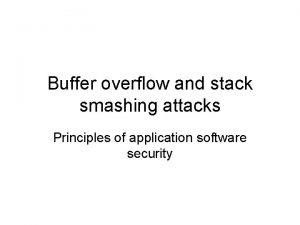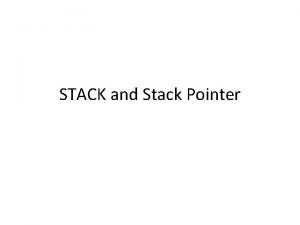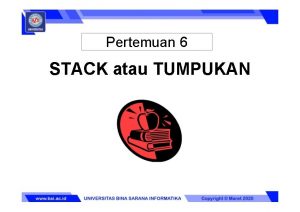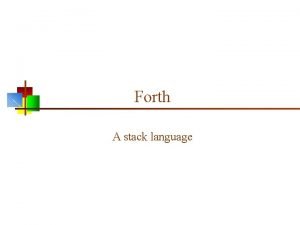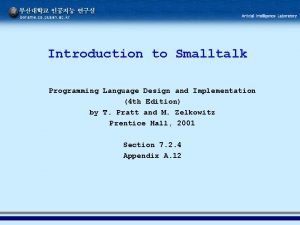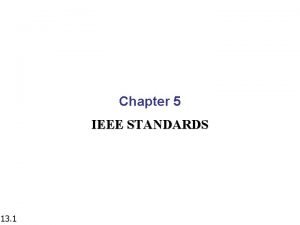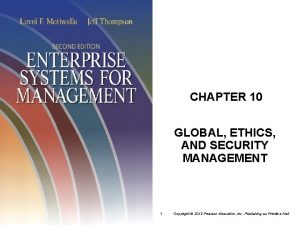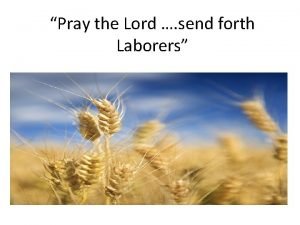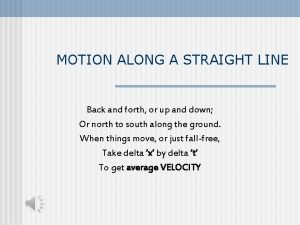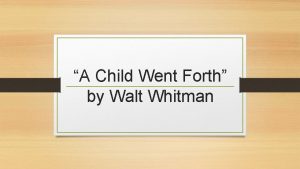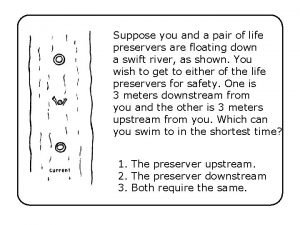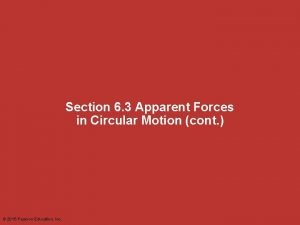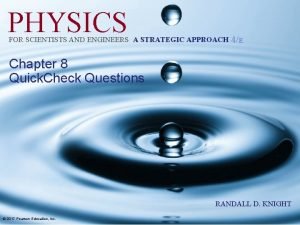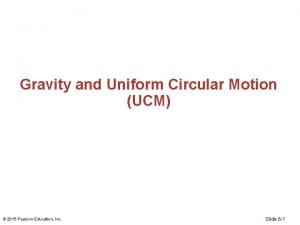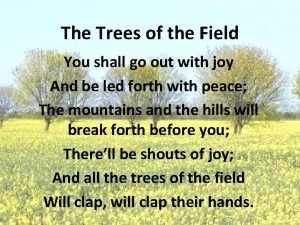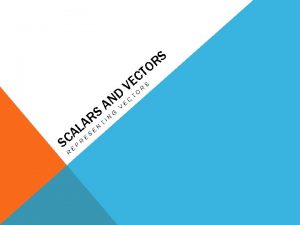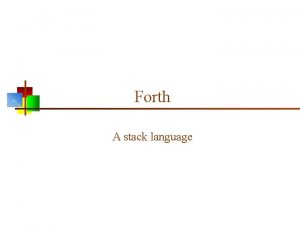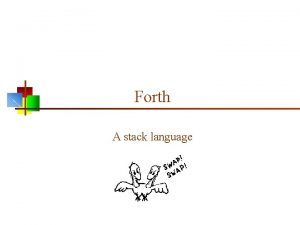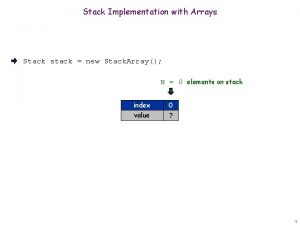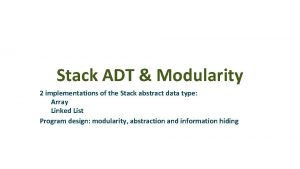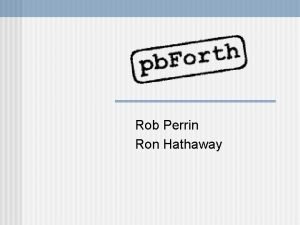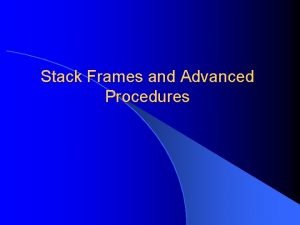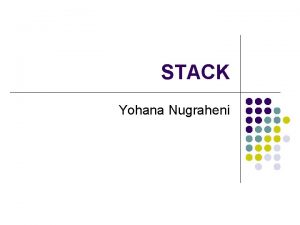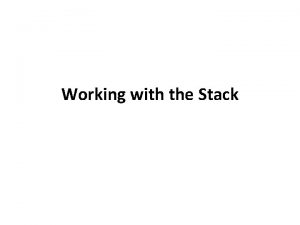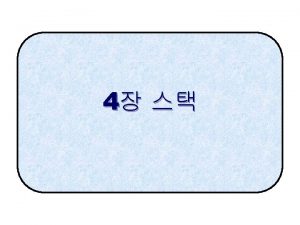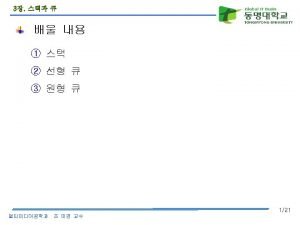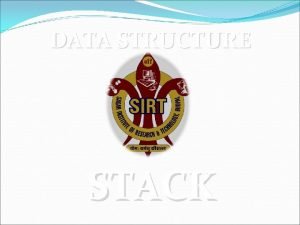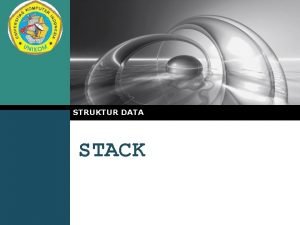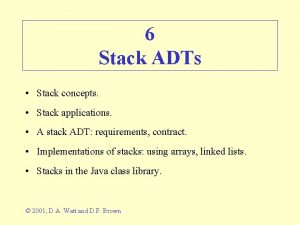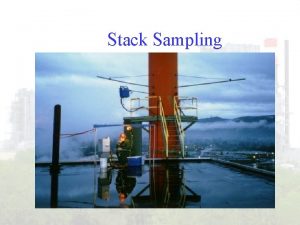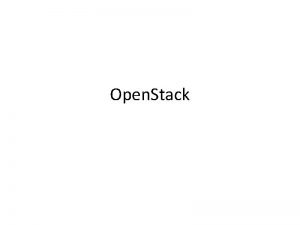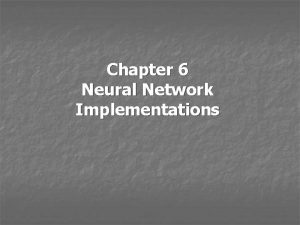Forth A stack language Free implementations n For
























- Slides: 24

Forth A stack language

Free implementations n For our purposes, pforth seems to be best n n n http: //www. softsynth. com/pforth/ Another alternative is Swift. Forth http: //www. forth. com/swiftforth/dl. html Both are ANS compliant 2

Forth syntax n n n A word consists of a sequence of printable (nonwhitespace) characters A program consists of a sequence of words, separated by whitespace Any questions? 3

Basic execution n n Forth uses a dictionary to hold function definitions, and a stack to hold data Words are evaluated left to right, top to bottom, in the usual order n Forth is case insensitive n n Most documentation uses words in all caps, but lowercase is also ok If a word is in the dictionary, n n the function is looked up and executed else Forth converts the word to a number, if it can, and places it on the stack 4

Defining and calling functions n A function is defined with : function. Name ( old -- new , words ) body ; n n n For example, addition might be documented as ( n 1 n 2 -- n 3 , adds top two items ) A function is called by mentioning its name n n n The function expects to find its parameters on the stack The function places its return values on the stack The ( old -- new , words ) tells how the stack is changed Parameters, if any, are taken from the stack Return values, if any, are placed on the stack Example: n n : add 3 ( n 1 n 2 n 3 -- n 4 , add 3 items) + + ; 1 2 3 4 5 add 3. s 1 2 12 <-Top ok ok 5

Displaying the stack n . ( N -- , print number on top of stack ) n n n Removes (“pops”) the top number from the stack and prints it 2 2 +. 4 ok . s ( -- , print the entire stack ) n n n This does not modify the stack contents 1 2 3 4 5 <-Top ok +. 9 ok. s 1 2 3 <-Top ok The top of the stack is on the right n n The above examples are from Swift. Forth, which prints <- Top Most other Forth implementations just take this for granted 6

Manipulating the stack n 0 sp ( clears the stack ) (pforth only) n n dup ( n -- n n , duplicate top of stack ) n n ok 1 2 3 4 5 swap. s 1 2 3 5 4 <-Top ok over ( a b -- a b a , copy second item on stack ) n n 1 2 3 4 5 dup. s 1 2 3 4 5 5 <-Top swap ( a b -- b a , swap top two items on stack ) n n 0 sp ? . s <-Top ok 1 2 3 4 5 over. s 1 2 3 4 5 4 <-Top ok pick (. . . v 3 v 2 v 1 v 0 N --. . . v 3 v 2 v 1 v 0 v. N ) n Makes a copy of the Nth stack item; 0 PICK is equivalent to DUP 7

More stack manipulations n n n n n DROP ( a -- , remove top item from the stack ) ROT ( a b c -- b c a , ROTate third item to top ) ? DUP ( n -- n n | 0 , duplicate only if non-zero, '|' means OR ) -ROT ( a b c -- c a b , rotate top to third position ) 2 SWAP ( a b c d -- c d a b , swap pairs ) 2 OVER ( a b c d -- a b c d a b , leapfrog pair ) 2 DUP ( a b -- a b , duplicate pair ) 2 DROP ( a b -- , remove pair ) NIP ( a b -- b , remove second item from stack ) TUCK ( a b -- b a b , copy top item to third position ) 8

Arithmetic n n n Arithmetic is integer + - * / mod are add, subtract, multiply, integer divide, modulus, all ( n 1 n 2 -- n 3 ) Some “shorthand” operators are 1+ 1 - 2+ 2 - 2* 2/ n n n n n 10 2/. 5 ok /MOD ( n 1 n 2 -- rem quot , remainder and quotient of n 1/n 2 ) MIN ( n 1 n 2 -- n 3 , minimum of n 1 and n 2 ) MAX ( n 1 n 2 -- n 3 , maximum of n 1 and n 2 ) ABS ( n -- abs(n) , absolute value of n ) NEGATE ( n -- -n , negate value, faster then -1 * ) LSHIFT ( n c -- n<<c , left shift of n ) RSHIFT ( n c -- n>>c , logical right shift of n ) ARSHIFT ( n c -- n>>c ) , arithmetic right shift of n ) 9

Output n EMIT ( n -- , display character with ASCII value n ) n n CHAR ( <char> -- char , get ASCII value of a character ) n Unusual: Uses the following text, not the stack! n n 111 108 dup 101 72 emit emit Hello ok char A. 65 ok . " ( -- , print string up to next " ) n . " Hello from pforth! ok Works in Swift. Forth when in a function, but not by itself in REPL (? ) SPACE ( -- , output a space ) SPACES ( n -- , output n spaces ) CR ( -- , start new line , carriage return ) n n 10

Strings n . " will output a string, up to a " n n ok S" will put a string on the stack n n n . " hello Stack<10> Format: Character count on top, machine address below that s" Hello from Forth!" ok Stack<10> 140255546192593 17 TYPE will remove a print a string from the stack n type Hello from Forth! Stack<10> ok 11

Strings, character by character n n Given the machine address of a string, C@ will return the first character CHAR+ will advance to the next character n n n s" ABCDE" ok Stack<10> 140354489823953 5 drop dup ok Stack<10> 140354489823953 c@ emit A ok Stack<10> 140354489823953 char+ dup c@ emit B ok Stack<10> 140354489823954 char+ dup c@ emit E ok Stack<10> 140354489823957 12

Input n KEY ( -- char , input character ) n n : testkey ( -- ). " Hit a key: " key cr. " That was ". cr ; ok testkey Hit a key: A That was 65 13

Loading from a file n In file sample. fth, in same directory as sf: n n Sample Forth Code Author: Phil Burk ANEW forget what was loaded before : SQUARE ( n -- n*n , square number ) DUP * ; : TEST. SQUARE ( -- ) CR. " 7 squared = " 7 SQUARE. CR ; In Swift. Forth: n n n include sample. fth ok test. square 7 squared = 49 ok Very similar in pforth forget square – forgets everything from square on down (pforth only) 14

More about loading n FORGET definition is supposed to forget the named definition and everything that follows n n n This works in pforth, but I don’t think it does in Swift. Forth ANEW should forget what was loaded before INCLUDE? filename will only load code if it isn’t already in the dictionary 15

Constants and variables n Constants can be defined as value CONSTANT name n n n 42 constant the. Answer. 42 ok ok Variables can be defined with VARIABLE name n n VARIABLE ( <name> -- , define a 4 byte memory storage location ) @ ( address -- value , FETCH value FROM address in memory ) ! ( value address -- , STORE value TO address in memory ) variable ans ok 42 ans ! ok ans ? 42 ok ans @. 42 16

Logic n n true and false are constants -1 and 0 Comparisons are < <= = >= > n n 2 2 3 3 n 0> 0< <. -1 ok >. 0 ok <=. -1 ok >=. 0 ok Logical operators are and n 0= true -1 and. -1 ok true and not. 0 or not ok 17

IF-ELSE-THEN statements n Forth has an “if” statement n n n : show. If ( flag -- , print logical value ) if. " true" else. " false" then ; ok true show. If true ok false show. If false ok 55 show. If true ok The “else” part is optional It helps to think of then as “end if 18

BEGIN … END Loops n BEGIN … END will loop until a given condition is true n n 5 begin 1 - dup not until 4 3 2 1 0 Stack<10> 0 0 begin dup. 1+ dup 3 = until 0 1 2 ok Stack<10> 3 ok 19

DO … LOOP Loop n end start DO … LOOP will loop a fixed number of times n n 5 1 do. " hi! " loop hi! hi! Stack<10> ok You can access the loop counter with I n 5 1 do. " hi#" i 48 + emit loop hi#1 hi#2 hi#3 hi#4 ok Stack<10> 70 65 do i. i emit space loop 65 A 66 B 67 C 68 D 69 E ok n You can leave the loop with LEAVE n n 50 1 do. " hi " i 5 > if leave then loop hi hi hi ok Stack<10> 20

BEGIN … WHILE … REPEAT Loop n BEGIN test WHILE body REPEAT acts like a while loop in more traditional languages n 2 begin dup 1000 < while dup. 2* repeat 2 4 8 16 32 64 128 256 512 ok Stack<10> 1024 21

“Case” statements n On file sample. fth: n n : day-of-week ( n -- str , return day of week, Sunday = 1 ) case 1 of s" Sunday" endof 2 of s" Monday" endof 3 of s" Tuesday" endof 4 of s" Wednesday" endof 5 of s" Thursday" endof 6 of s" Friday" endof 7 of s" Saturday" endof endcase ; include sample. fth Include sample. fth include added 768 bytes, 39236 left. ok Stack<10> 4 day-of-week type Wednesday ok Stack<10> 22

References Most of this lecture based on (or shamelessly stolen from) the excellent Forth Tutorial by Phil Burk: http: //www. softsynth. com/pforth/pf_tut. php 23

The End The first time I combined the ideas I had been developing into a single entity, I was working on an IBM 1130, a “thirdgeneration” computer. The result seemed so powerful that I considered it a “fourth generation computer language. ” I would have called it Fourth, except that the 1130 permitted only five-character identifiers. So Fourth became Forth, a nicer play on words anyway. --Charles “Chuck” Moore 24
 Windmill bring forth or challenge forth
Windmill bring forth or challenge forth Stack smashing vs buffer overflow
Stack smashing vs buffer overflow Definition of stack pointer
Definition of stack pointer Dilakukan perintah top(push(b,s))
Dilakukan perintah top(push(b,s)) Forth language
Forth language Smalltalk example
Smalltalk example What are the common standard ethernet implementations?
What are the common standard ethernet implementations? With erp implementations why would an auditorget involved
With erp implementations why would an auditorget involved The two households in romeo and juliet
The two households in romeo and juliet Personification
Personification Forth housing association
Forth housing association Active forth falkirk
Active forth falkirk Send forth prayer
Send forth prayer A back and forth movement in a straight line
A back and forth movement in a straight line The trees danced back and forth in the wind
The trees danced back and forth in the wind There was a child went forth analysis
There was a child went forth analysis The ability to bring forth something new that has value
The ability to bring forth something new that has value An airplane makes a straight back-and-forth round trip
An airplane makes a straight back-and-forth round trip Physics textbook
Physics textbook Physics textbook
Physics textbook Forth crete
Forth crete A physics textbook swings back and forth as a pendulum
A physics textbook swings back and forth as a pendulum We shall go out with joy and be led forth with peace
We shall go out with joy and be led forth with peace Consider a football coach pacing back and forth
Consider a football coach pacing back and forth Thomas forth
Thomas forth

